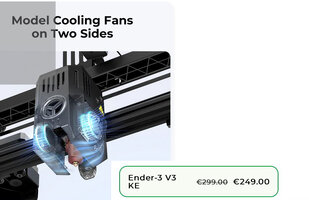Artur5
Printer Master
- Joined
- Jan 24, 2011
- Messages
- 1,319
- Reaction score
- 1,657
- Points
- 278
- Location
- Kmt. 0.
- Printer Model
- MB5150,Pro10s,i3Mk3s+,Voron2.4
Bed leveling depends a lot on the type of bed. I expect that it’s far easier to manufacture a perfectly flat glass sheet than one made of glass fiber or a thick aluminum plate. Glass fiber beds, as used Prusas, and static aluminum beds, used by many core XY machines, always need to perform a mesh bed leveling before printing, in order to store in the memory of the printer a relief map of the bed, which is never perfectly flat to the micron. In spite of that, the machine has a hard time making a perfect map if the bed has small bumps and hollows. That’s often the case with beds made of glass fiber sheets, Same for aluminum beds, specially the cheap ones from Ali-Express. Good luck finding one with +-0.1mm tolerances.I will say this: I've never had many issues with bed-leveling. In fact, I can level once super fast (paper method) and then not have to touch any leveling for dozens and dozens of prints. Maybe I'm lucky and/or not as meticulous about the first layer?
Anyway, manually leveling the bed with a sheet of paper may be good enough for your practical purposes, but not really a very accurate system when compared to inductive probes or micro switches. If you only print PLA on a cold bed , then the paper system is fine. If you printed different filaments with a hot bed at different temperatures that’s another story.
Also, imagine you want to print with glow-in-the-dark PLA ( very abrassive stuff ). A brass nozzle would wear noticeably after a few hours and you’d need to redo the bed leveling every other day (or use a hardened steel nozzle).
Last edited:

